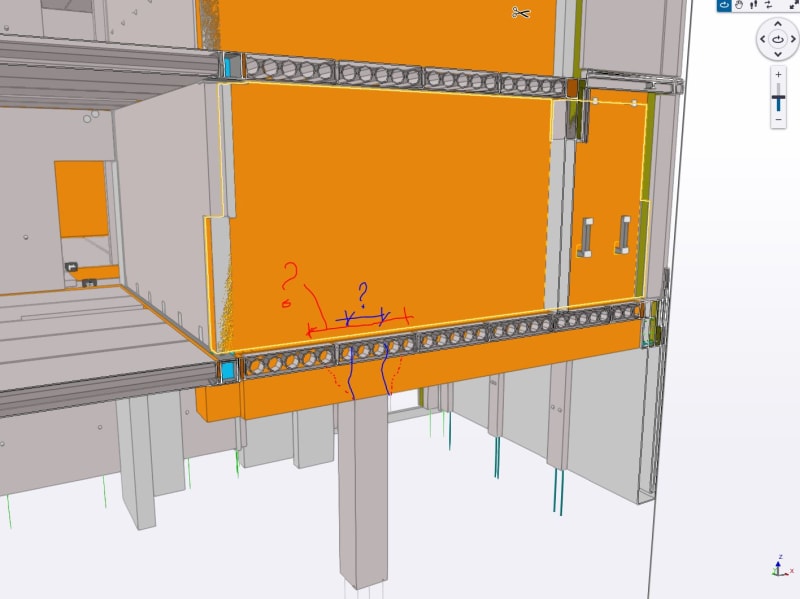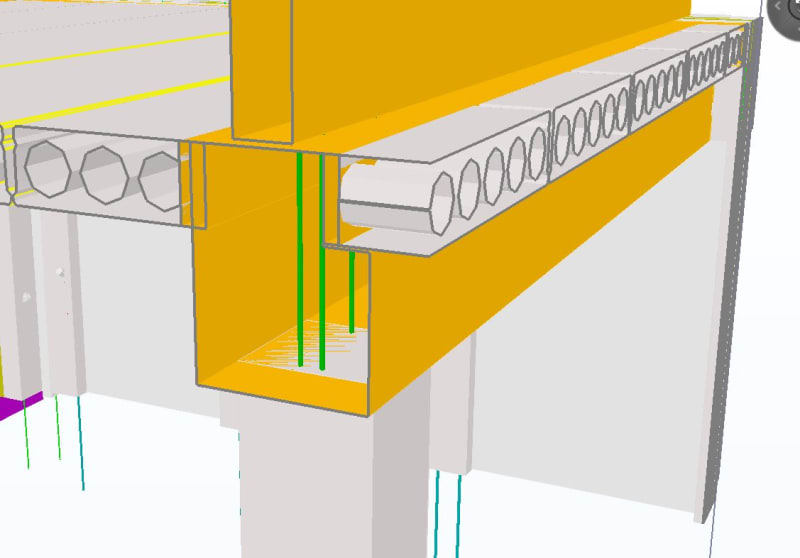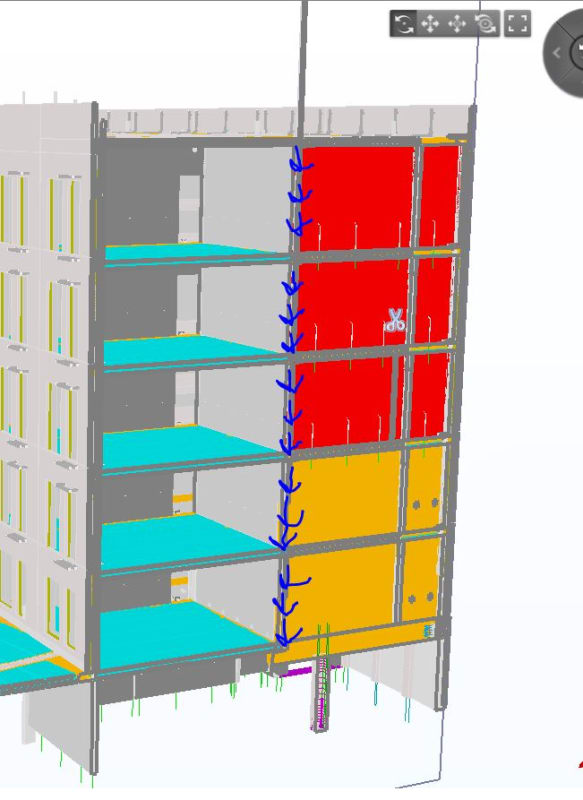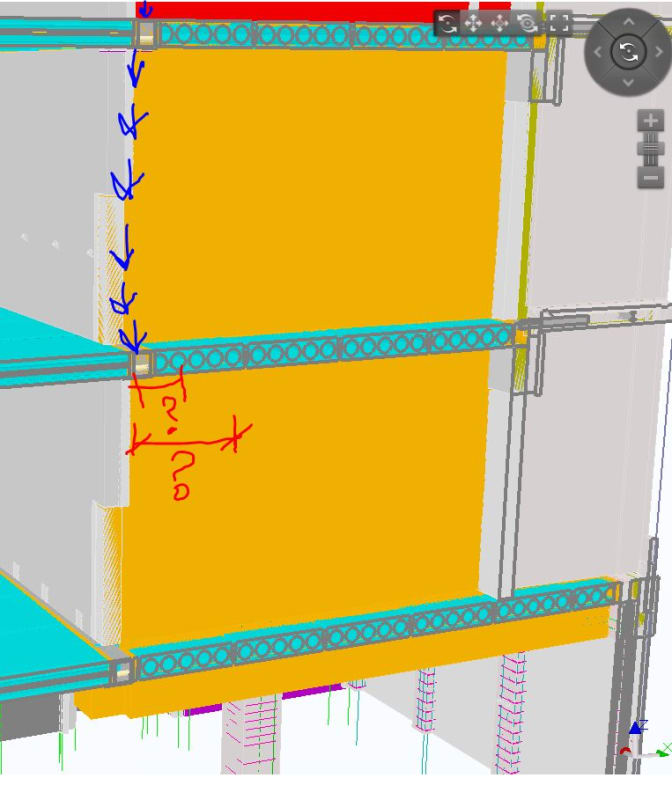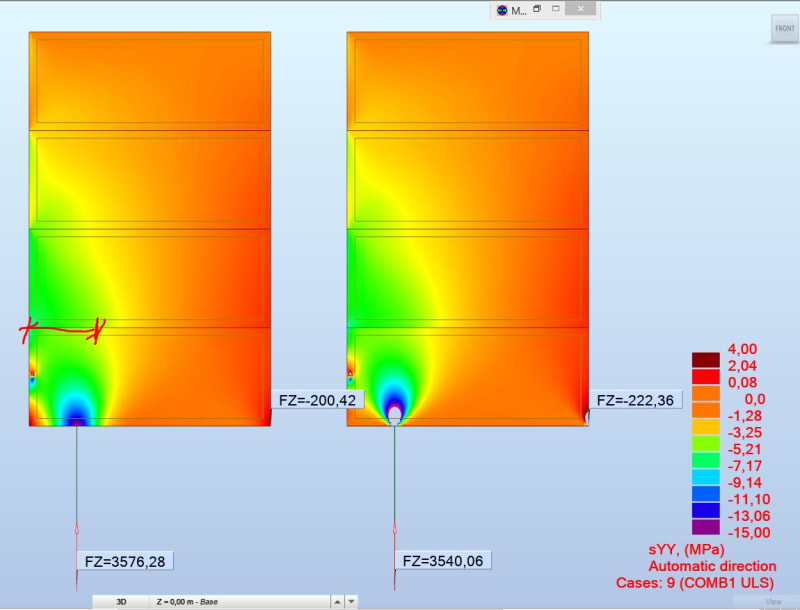Jummybear
Civil/Environmental
- Jul 24, 2014
- 10
I have to design some deep beams (walls) in my ongoing project. I have a problem with determining appropriate length of support. I will attach a picture. Between deep-beam and concrete column there is a concrete beam for supporting hollow core slabs on first floor. What would you suggestion for length of the support? Length on the column look very conservative, probably something between 25-45 degrees?
